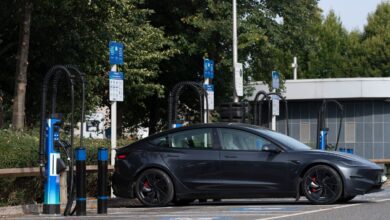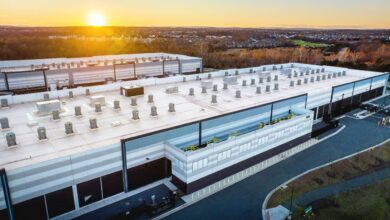A possible antidote to next-day delivery?

Register to get 1 free article
Reveal the article below by registering for our email newsletter.
Want unlimited access? View Plans
Already have an account? Sign in
If you’re a retailer, you’ll know all too well that deliveries go way deeper than simply making sure your products make their way to customers in one piece. We’re talking Grand Canyon deep, here. Because deliveries are a battlefield like no other in the digital commerce world.
While increased customer expectations have undoubtedly played their part in this enormous pressure that retailers and brands feel in terms of having to offer next-day delivery, those expectations didn’t come from nowhere.
The past couple of years has seen major changes in terms of the speed at which orders are being delivered. A ‘Keeping up with the Jonses’ mentality towards deliveries means that merchants are constantly being served messages urging them to compete with Amazon, while Amazon is merely competing with itself, breaking its own records time and time again.
Sustainable e-commerce and next-day deliveries
Meanwhile, sustainable eCommerce is gaining more momentum than ever before. Consumers are calling for retailers to remove excess packaging from their products. Belief-driven buying is on the rise in a big way. Over half of consumers in both the US and the UK have said that they want to fashion industry to become more sustainable. Yet, retailers far and wide are breaking their backs (not to mention budgets) fulfilling orders as quickly as is humanly possible to stand a chance of surviving in this incredibly competitive space.
Oh, and did I mention that the environmental cost of same-day delivery is the equivalent of killing 3,000 trees, compared with 3-4 day delivery, which is comparable to chopping down 10?
Something’s clearly amiss here. How can consumers want more sustainable options, yet still want their orders delivered in a fast and furious fashion, or intentionally over-order products with the intention of returning 80% of them, thanks to free returns? Because, chances are, they truly aren’t aware of the implications of the activities and procedures that have effectively become the norm in recent years.
An alternative approach
So, let’s try this on for size. Merchants need to start educating their customers. That doesn’t have to mean removing the next-day delivery options from your checkout this very minute. But a small change you can implement that has the power to make a real difference in terms of opening your customers’ eyes is to clearly outline the various environmental impacts that customers have control of when they choose a delivery option at checkout.
For example – choosing next-day delivery equals a carbon footprint of X, normal delivery has an estimated carbon footprint of Y. Users still have the choice of picking either X or Y, but what you might start to notice is that by applying context and educating them on the ramifications of those choices, you might notice a shift in overall delivery preferences.
In order for there to be a shift in culture around deliveries, customer expectations need to change, and merchants have more power than they might think in terms of influencing this change in mentality. And while it’s rather unlikely that delivery speed will slow down significantly, educating consumers on the environmental impact of super-sonic shipments should, at the very least, give logistics and courier companies enough breathing room to implement more efficient ways to deliver goods – by filling vehicles to capacity, or integrating electric vans into their fleet, and so on.
By Michelle McSweeney, content marketing manager at Kooomo, a digital commerce platform which works with clients to maximise all digital sales channels







